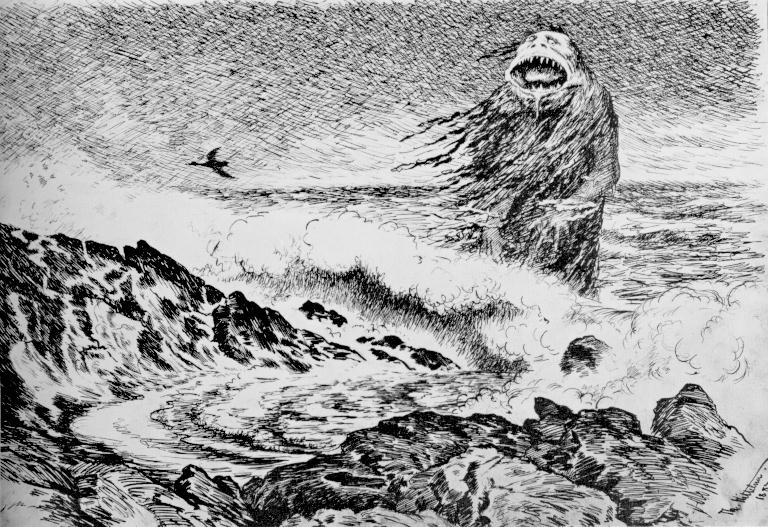Here, there, trolls everywhere! Posted by hulda on Oct 12, 2012 in Icelandic culture, Icelandic grammar
Tröllið er þar / tröllið er þarna; tröllið er hér / tröllið er hérna: which sentences do you think should make you react faster? What about the difference between tröllið kemur héðan as opposed to tröllið kemur hingað?
Of the first two examples both translate as “the troll is there” and the latter two as “the troll is here” but Icelandic has two ways of saying “here” and “there”. Two of them only mean that the troll’s location is known, wherever that is, whereas the others mean that the troll is already so close you can see it. It’s vital that you learn the difference, especially if you happen to be a young man. The trolls vary greatly in character but the friendly ones are unlikely to seek your company, so a troll coming at you is more likely than not looking for dinner – or in case of the young human men, bed mates. Strangely enough women seem to be relatively safe as the male trolls don’t really seem interested in human females in this particular way, but don’t take this to mean that you can relax around them. Women fit the oven just as easily.
Hér and þar describe a general direction. Hérna means something is within your immediate surroundings, þarna means it’s a bit further away but within your vision. Hér is similarly closer than þar. To make this a bit more complicated neither can be translated as “over there” or “over here”. Those two would much rather be “þarna megin” and “hérna megin”, although the “over here/there” has to be occasionally used in translations depending on the nuances of the situation.
The above words all show kyrrstaða, no movement. There are other words that hint at direction which either fall under hreyfing frá (= movement from); héðan/þaðan, and hreyfing til (= movement towards); hingað/þangað. If you need to describe the direction from which the troll is coming or the direction that it’s going you’re going to have to use those instead.
Tröllið kemur héðan (= the troll comes from over here). Perhaps the troll has passed some lucky person without noticing him and he’s trying to warn you. The troll is coming right from the place where the speaker is.
Tröllið kemur þaðan (= the troll comes from over there). This troll is coming from a known location: f.ex. it has been seen using the same route often or someone’s seen it go to place X – its location and the direction it’s moving are known but you don’t necessarily see it at the moment. If it’s always using the same route and you want to point this out to someone you can say: “Tröllið kemur alltaf þaðan” (= the troll always comes from over there).
For movement towards something you should use hingað and þangað (= towards here/there). Tröllið kemur, komdu hingað til minn/mín (= the troll is coming, come here where I am)! Tröllið fór þangað (= the troll went over there/to that place/to that direction). Here are some more examples of other directions working the same way as the words hér and þar:
Heima; (að) heiman, heim (= at home; from home, to home)
Niðri; (að) neðan, niður (= at below; from below, to below)
Uppi; (að) ofan, upp (= at above; from above, to above)
The following directions work a bit differently, however:
Fyrir norðan, fyrir sunnan, fyrir austan and fyrir vestan mean “at north/south/east/west” even though they look like the same form as the from-directions mentioned above. To describe movement from these directions you’ll simply have to use the preposition að:
að norðan, að sunnan, að austan, að vestan (= from the north/south/east/west). And strangely, to describe movement towards these directions you would use the forms:
Norður, suður, austur, vestur (= towards north/south/east/west).
The first image is by Sigurður Jónsson and can be found here on Flickr. Alternatively you can visit her at Skógafoss.

Build vocabulary, practice pronunciation, and more with Transparent Language Online. Available anytime, anywhere, on any device.
About the Author: hulda
Hi, I'm Hulda, originally Finnish but now living in the suburbs of Reykjavík. I'm here to help you in any way I can if you're considering learning Icelandic. Nice to meet you!






Comments:
leonhard:
Just wanted to thank you for an entertaining, informative post.
hulda:
@leonhard Glad to hear you liked it! 🙂